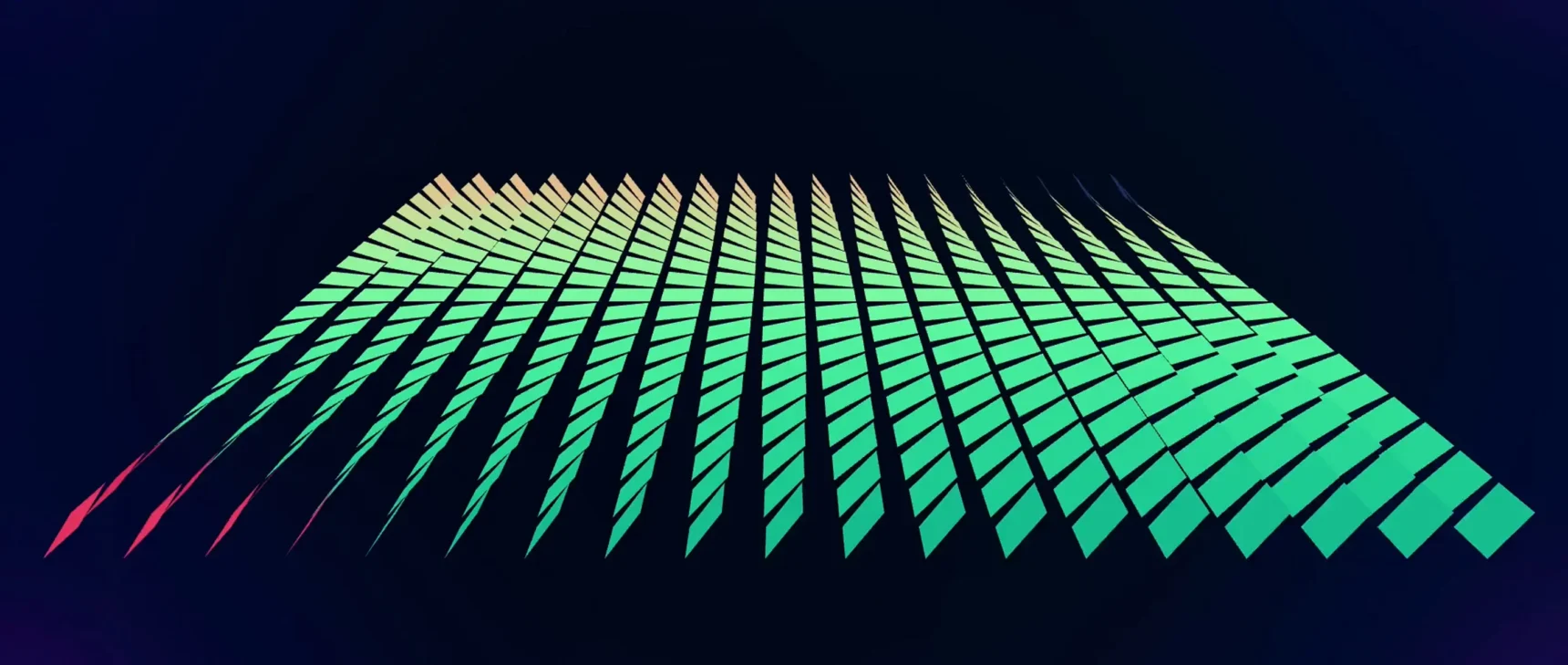The Scientist Who Decodes the Songs of Undersea Volcanoes
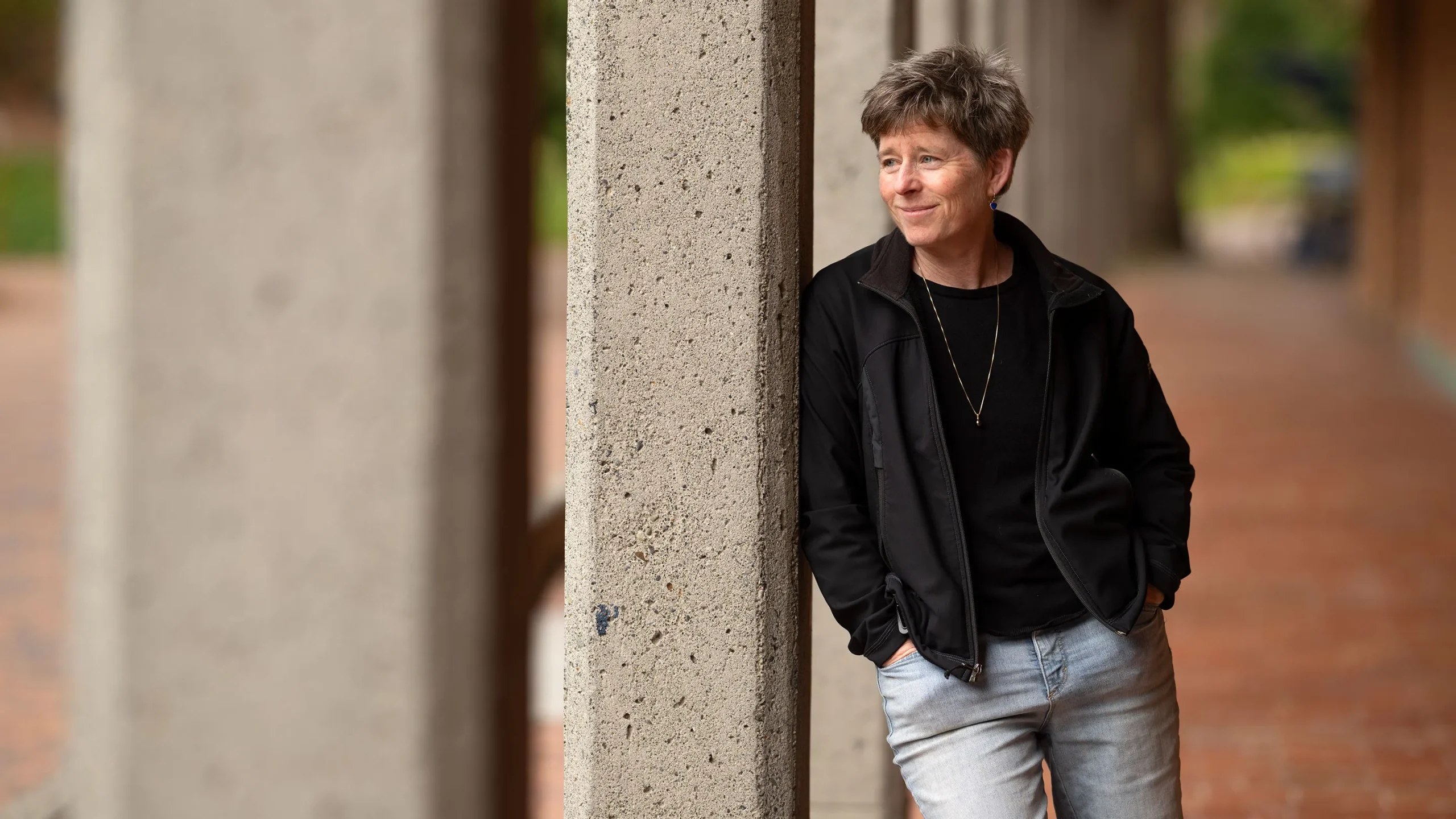
Jackie Caplan-Auerbach, a volcanologist and seismologist, is enchanted by the murmurs and belches of underwater volcanoes, which are like gateways to the Earth’s interior.
Jimmy Jeong for Quanta Magazine
Introduction
We often think of volcanoes as skyscraping marvels, but these portals to the geologic underworld also reside underwater. Unfortunately, submarine volcanoes are trickier to study than their terrestrial siblings. But you would be hard-pressed to find anyone more enchanted by them — and more stubbornly determined to study them — than Jackie Caplan-Auerbach.
A volcanologist at Western Washington University, Caplan-Auerbach is also a seismologist, someone who uses the jiggles of earthquakes to understand geophysics. And it just so happens that active volcanoes are prodigious earthquake producers; they make as much seismic noise as they can muster. For Caplan-Auerbach, that noise is music to her scientific ears — data that can be used to learn about the internal workings of our planet.
Listening to these volcanic songs isn’t just about satiating an isolated scientific curiosity. When a submarine volcano in the South Pacific named Hunga Tonga-Hunga Ha‘apai catastrophically exploded in January 2022, it produced a devastating regional tsunami, caused the atmosphere to thrum like the surface of a drum, and buried the Kingdom of Tonga’s main island in ash. Caplan-Auerbach and her colleagues hope that by studying the soundtrack of such violent eruptions, they can learn enough about the physics behind the paroxysms to ease the impacts of future volcanic disasters.
Quanta Magazine caught up with Caplan-Auerbach to discuss her journey into geophysics and what it’s like to study the melodies of these magmatic mountains. The interview has been condensed and edited for clarity.
How do you describe what you do?
I study the earthquakes that take place in volcanic systems, which I describe as the songs of the volcano. I’ve always loved sound. And I’ve always loved resonance and standing waves. A classic example of standing waves is when you take a beer and blow over the top of the bottle, and it hums — or it’s when you run your finger on the top of your wineglass, which is more to my boozy tastes, and the glass sings. Everything has a hum that is associated with its shape and its material properties, and volcanoes are no different. Their conduits have hums.
I don’t know why, but that science has always really appealed to me. That was exactly the thing that I loved, and I get to do it on volcanoes.

Caplan-Auerbach has always loved sound and the clues that sound waves offer about a material’s properties. In her office at Western Washington University, she studies a readout of the sound waves that were created when lava met water near Hawai’i’s Kīlauea volcano.
Jimmy Jeong for Quanta Magazine
You’ve previously spoken to Quanta, for a story about how earthquakes inside volcanoes can reveal if molten rock is accumulating at depth or moving toward the surface, perhaps leading to an eruption. But how do you spy on underwater volcanoes?
The oceans in general are hard to study. You can’t see very far; it’s very difficult to put instruments down. It’s cold. It’s high-pressure. It’s salty. Things corrode and implode.
If we want to monitor submarine volcanoes, we can put instruments out there. Most of the time, we drop instruments overboard, including seismometers; then we go away, and then we come back, retrieve the instruments, and see what happened while we were gone. But if we want to get information in real time, we typically have to lay down an instrumented cable, and the costs are astronomical.
What kinds of instruments can you use?
Hydrophones, or mechanical ears that listen to all sorts of underwater noises, are a wonderful tool. There’s a zone about a kilometer underwater where sound gets trapped. If you have a hydrophone there, it can hear sounds from literally thousands of kilometers away. You can set up an array that tells you, ‘Oh, that sound is coming from here, and that sound is coming from there.’ You can hear earthquakes, you can hear landslides, you can hear volcanic eruptions, you can hear whales, you can hear ships — God, ships are loud. And you can kind of stream the songs of volcanic activity.
In an ideal world, you’d still have your seismometers on the volcano itself. But just a hydrophone can tell you a ton. There have been hydrophones deployed in the Tonga area several times, and it’s a tool that I’d love to use more.
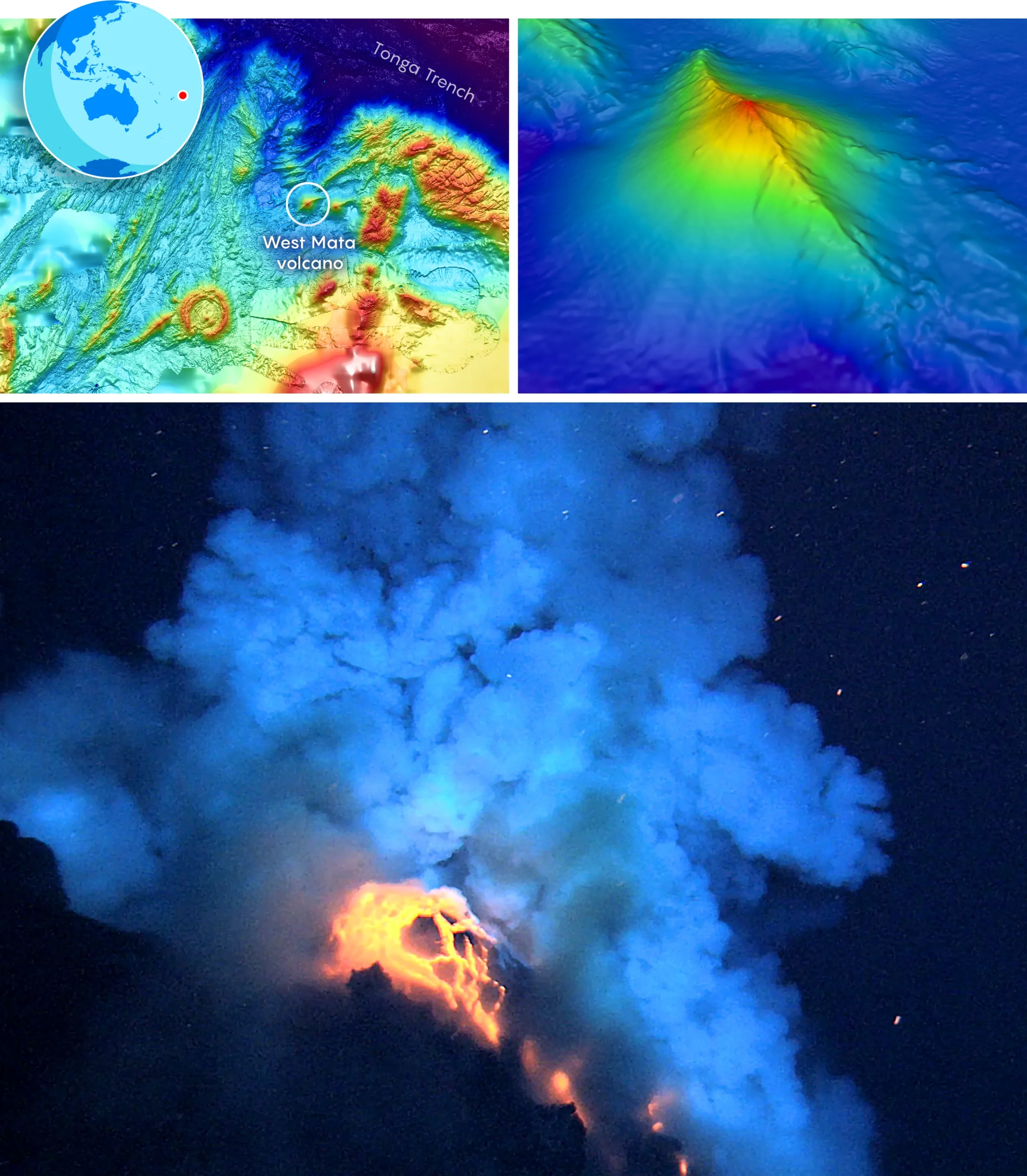
The West Mata volcano in the Lau Basin near Fiji and Tonga is not the region’s largest volcano, but it appears to be the most active. Top left: a map of the surrounding seafloor, with the volcano circled in white. Colors correspond to depth, with blue being deeper and red shallower. Top right: a close-up of the volcano’s summit, which is nearly a mile beneath the water. Its base is miles long. At bottom: superheated molten lava erupting into the sea.
Courtesy of Susan G. Merle, NOAA EOI Program/Oregon State University CIMERS (top); Courtesy of NSF and NOAA
I imagine that, under or above water, each new eruption is like hearing a new dialect for the first time, one that needs translating.
Right. When do we have a rubbly lava flow approaching the coast, versus when do we have a more riverlike lava flow dribbling in? We don’t know how to identify these sorts of things at first. That’s why science is fun. The fun part is saying: I don’t know, and how can I find out?
What is it about submarine volcanoes that beguiles you?
They show us that there are extraordinary things that happen underwater that we don’t even know about. It makes me feel that we are just not that relevant, which I think is kind of wonderful. This planet is not here for us. This planet is doing its own things.
Are there any eruptions or earthquakes that lack this emotional dilemma?
I talk about the 2002 Denali earthquake as the perfect earthquake: It was huge, it had these amazing impacts, it answered a lot of questions about how that fault works, but it didn’t kill anybody. It was this nearly magnitude-8.0 event that you could genuinely be excited about without guilt.
That’s another nice thing about submarine volcanoes. With the exception of this sucker out in Tonga, for the most part, people are not impacted by them.
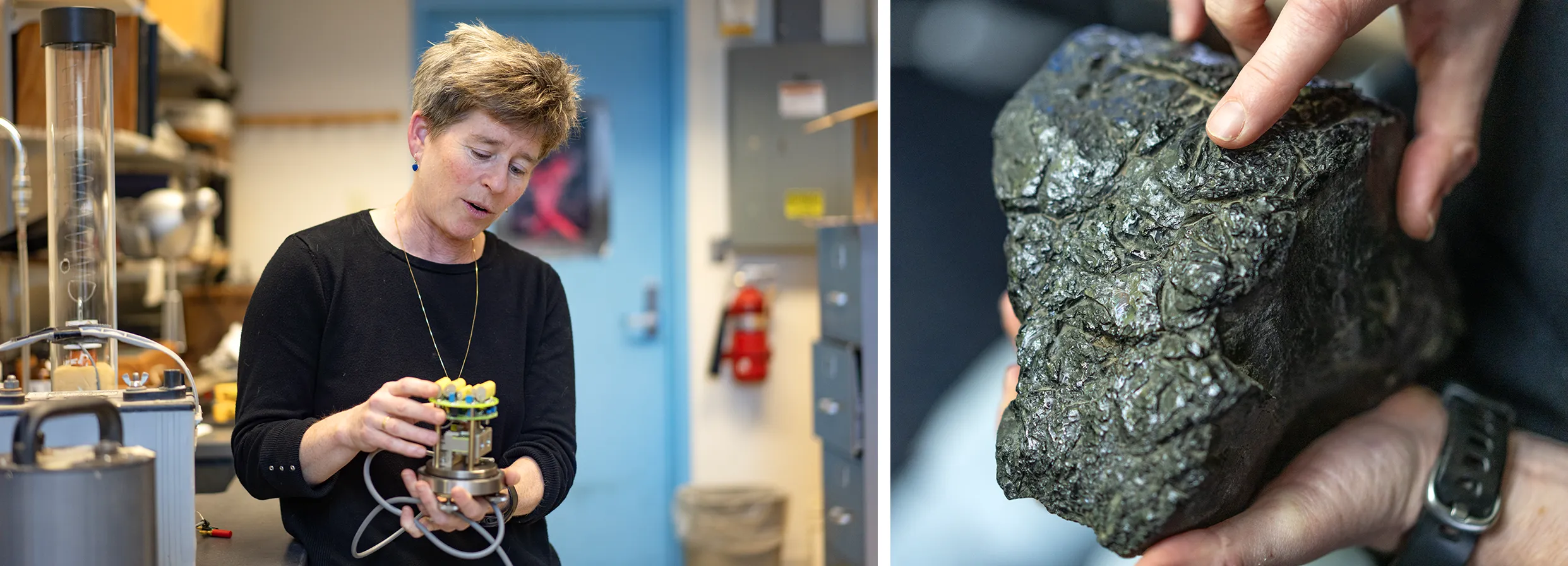
Caplan-Auerbach uses seismometers (left) to study underwater eruptions, which are tougher to observe than their terrestrial counterparts. She holds a pillow basalt rock recovered from Hawai‘i’s Kama‘ehuakanaloa volcano, 1 kilometer underwater (right).
Jimmy Jeong for Quanta Magazine
Were you ever tempted to specialize in something other than underwater volcanoes?
When I went to the University of Hawai‘i, I was debating between doing marine geophysics and planetary science. I was like, oh my God, I could study Olympus Mons, the tallest volcano on Mars. But in my second semester, I went on a 28-day research cruise in the Lau Basin, in the South Pacific, and that signed, sealed and delivered marine geophysics. I just love being on ships. So I was like, to heck with that planetary stuff.
Wondrous though they often are, underwater volcanoes can sometimes inspire horror. This was demonstrated in January 2022 by the violent Hunga Tonga-Hunga Ha‘apai eruption — which, although it began underwater, made itself known by immediately exploding above the sea surface and punching a hole in Earth’s atmosphere. How does your fascination with volcanoes and earthquakes hold up in the face of these disasters?
That’s one of the challenges of studying natural hazards: How can I be so excited about the science and not be disrespectful to the people who were negatively impacted? And that’s really hard. When I get all joyous about these things, it may also be because I have not yet worked on an eruption that was devastating.
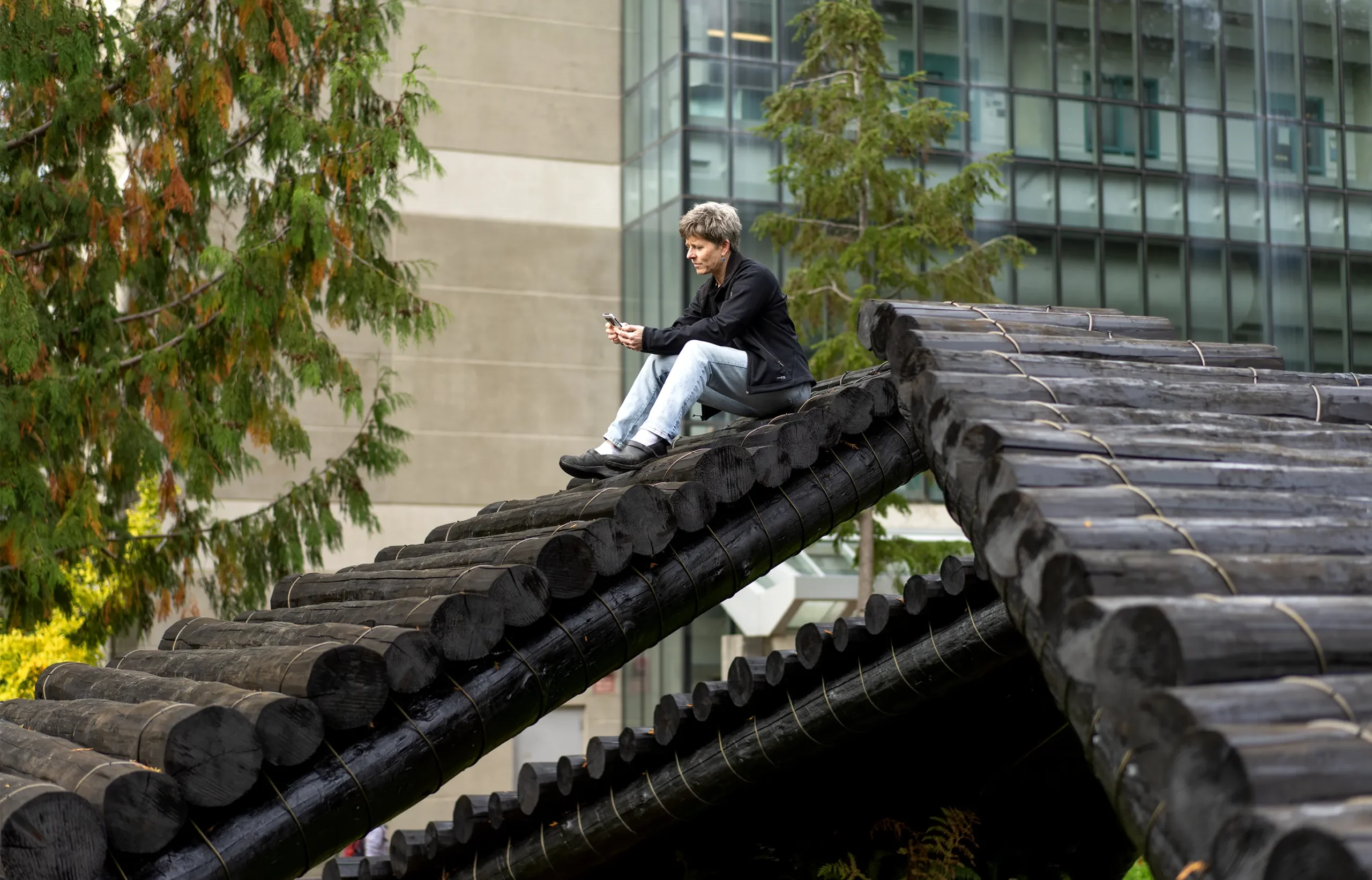
Caplan-Auerbach once considered studying planetary science. But then she went on a research cruise in the South Pacific and was sold on marine geophysics. “I was like, to heck with that planetary stuff.”
Jimmy Jeong for Quanta Magazine
The shock wave from the Tongan eruption triggered tsunamis on the other side of the world, in both the Atlantic Ocean and the Mediterranean Sea — something that was only a theoretical possibility up to that point, right?
Yeah. The Tonga eruption confirmed that tsunamis can be caused by atmospheric gravity waves. That’s mind-boggling.
We are almost two years on from that extraordinary explosive eruption. Has research into that event pushed the science of volcanology forward in any way?
Yes. Most of the volcano is pretty intact, and that’s crazy. And the stuff that did come out of it — the ejected volcanic debris — traveled so far underwater. With a big and unusual event like this, I think it both rewrites and redirects our questions. I think this eruption brings up questions that maybe we hadn’t asked before. Chiefly, how does this much explosive power happen without the edifice blowing itself to bits?
So although prominent eruptions can be dangerous, the upside is that they provide scientists with clues about the way volcanoes work?
Right. Sometimes we find these clues because we use a different technology. Sometimes we find them because the planet offers us a gift. And I feel like eruptions like this one, to some extent — and with respect to the people that are negatively impacted — are scientifically a bit of a gift.
This summer, your research caught the attention of an unexpected group: Swifties.
Oh my God. I don’t regret any of that.
Taylor Swift performed at Lumen Field in Seattle on July 22 and 23, and you had a look at the seismic waves generated by the concerts. According to your analysis, these performances produced measurable seismic activity, just like a small earthquake. And it got a lot of press attention. How was that?
No longer am I the person who studies volcanoes. I’m the person who’s known for the Swift Quake. It’s totally ridiculous. People have asked: Has Taylor Swift reached out? No, Taylor Swift has not reached out.
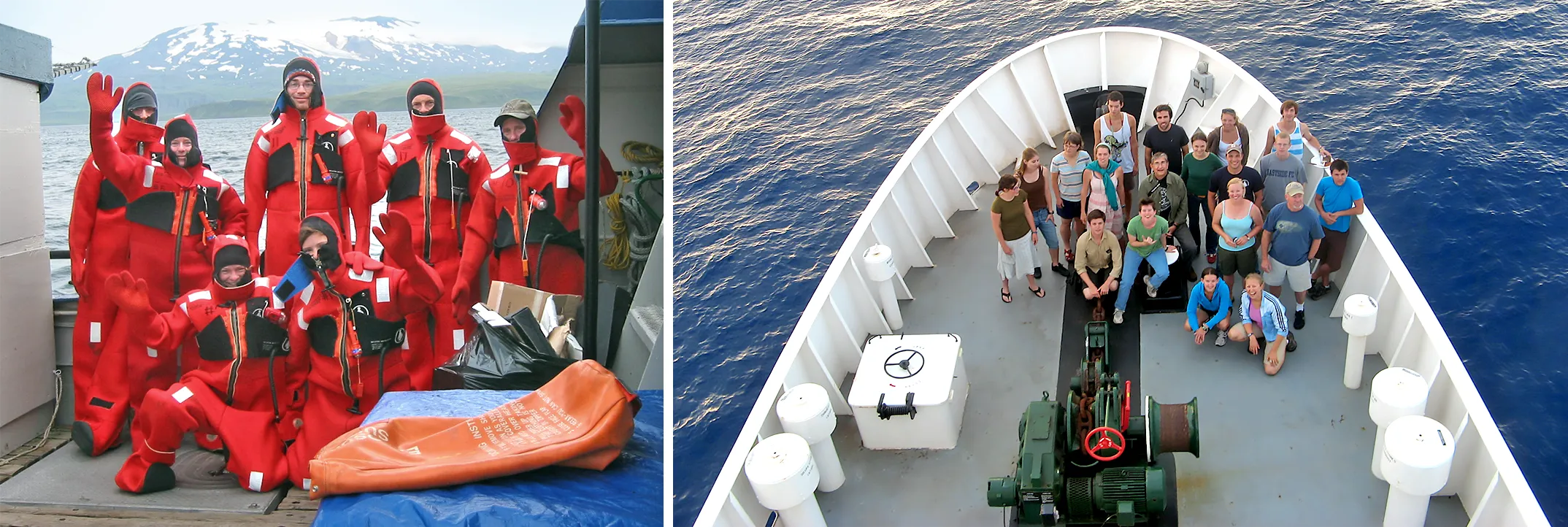
Caplan-Auerbach loves underwater volcanoes in part because they remind us of “extraordinary things that happen underwater that we don’t even know about.” Caplan-Auerbach and her colleagues are shown during a 2010 research cruise in the western Aleutian Islands (left), where they were setting up permanent monitoring networks. Right, Caplan-Auerbach (in the green shirt, at center) and her team during a 2003 cruise.
Courtesy of Jackie Caplan-Auerbach
You are presenting your work on the Swift Quake at the American Geophysical Union’s gathering in San Francisco in December. What will you be revealing?
The data are so cool. You can identify individual songs like “Blank Space” and “Shake It Off” by identifying their beats per minute — their rhythm — using a seismometer. And we’re actually able to distinguish things like amplified music, or the band, or the crowd behavior. They have really distinct, interesting seismic characteristics.
That’s not so different from identifying different types of activity inside underwater volcanoes.
Right. Different volcano-quake rhythms correspond to different types of volcanic activity, from moving magma cracking through rocks to landslides. And there are people who are really intrigued by the Swift Quake who aren’t scientists, and when it comes to science, anything that captures the interest of the public is great. It makes me really happy.
Many people think of a volcanologist as someone who scales fiery mountains and grabs samples of solid rock and bubbling lava. But using earthquakes to “hear” magma, gases and Swifties involves plenty of physics too — and it sounds like you’re a physicist at heart. So, what came first for you: the volcanoes, or the physics?
My father had a medical degree but always loved astronomy. When we visited his house, we’d sit outside, and he had a telescope, and we’d talk about the stars. I loved astronomy and astrophysics. Fundamentally, I loved the physics. I remember in my first-year physics class where we were literally standing and cheering for a derivation.
It sounds a bit like watching a great magic trick being performed.
It was! There were two lectures I remember that were magic. One was proving that the speed of light was constant, that it wasn’t dependent on a reference frame. And it was totally magical that this number falls out of the math. And the other was when we derived E = mc2. It was so cool.
Everyone seems to think we came to geology because we loved field trips. But the thing that got me was that derivation. And sometimes I think we should celebrate the beauty of that, because for some people, that’s enough. That is captivating. I love being out in the field, and I love to use seismometers and be on ships. But I think we should also celebrate the beauty that is physics.



